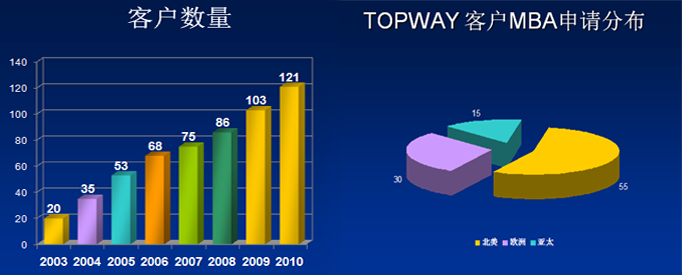|
 
- 精华
- 0
- 积分
- 1685
- 经验
- 1685 点
- 威望
- 132 点
- 金钱
- 744 ¥
- 魅力
- 351
|
T-3-Q33-Q36经济增长率
(This passage is excerpted from material published in 1997)
Whereas United States eco-
nomic productivity grew at an annual
rate of 3 percent from 1945 to 1965,
Line it has grown at an annual rate of
(5) only about 1 percent since the early
1970’s. What might be preventing
higher productivity growth? Clearly,
the manufacturing sector of the
economy cannot be blamed. Since
(10) 1980, productivity improvements
in manufacturing have moved the
United States from a position of
acute decline in manufacturing
to one of world prominence.
(15) Manufacturing, however, consti-
tutes a relatively small proportion
of the economy. In 1992, goods-
producing businesses employed
only 19.1 percent of American
(20) workers, whereas service-producing
businesses employed 70 percent.
Although the service sector has
grown since the late 1970’s, its
productivity growth has declined.
(25) Several explanations have been
Offered for this declined and for the
discrepancy in productivity growth
between the manufacturing and
service sectors. One is that tra-
(30) ditional measures fail to reflect
service-sector productivity growth
because it has been concentrated
in improved quality of services.
Yet traditional measures of manu-
(35) facturing productivity have shown
significant increases despite the
undermeasurement of quality,
whereas service productivity has
continued to stagnate. Others argue
(40) that since the 1970’s, manufacturing
workers, faced with strong foreign
competition, have learned to work
more efficiently in order to keep their
jobs in the United States, but service
(45) workers, who are typically under
less global competitive pressure,
have not. However, the pressure on
manufacturing workers in the United
States to work more efficiently has
(50) generally been overstated, often
for political reasons. In fact, while
some manufacturing jobs have been
lost due to foreign competition, many
more have been lost simply because
(55) of slow growth in demand for manu-
factured goods.
Yet another explanation blames
the federal budget deficit: if it were
lower, interest rate would be lower
(55) too, thereby increasing investment
in the development of new technol-
ogies, which would spur productivity
growth in the service sector. There
is, however, no dearth of techno-
(60) logical resources, rather, managers
in the service sector fail to take
advantage of widely available skills
and machines. High productivity
growth levels attained by leading-
(65) edge service companies indicate
that service sector managers
who wisely implement available
technology and choose skillful
workers can significantly improve
(70) their companies’ productivity.
The culprits for service-sector
productivity stagnation are the
forces-such as corporate
takeovers and unnecessary
(75) governmental regulation-that
distract managers from the task
of making optimal use of available
resources.
T-3-Q33
Which of the following, if true, would most weaken the budget deficit explanation for the discrepancy mentioned in line 27?
A. Research shows that the federal budget deficit has traditionally caused service companies to invest less money in research and development of new technologies.
B. New technologies have been shown to play a significant role in companies that have been able to increase their service productivity.
C. In both service sector and manufacturing, productivity improvements are concentrated in gains in quality.
D. The service sector typically requires larger investments in new technology in order to maintain productivity growth than dose manufacturing
E. High interest rates tend to slow the growth of manufacturing productivity as much as they slow the growth of service-sector productivity in the United States.
T-3-Q34
The passage states which of the following about the effect of foreign competition on the American manufacturing sector since the 1970’s?
A. It has often been exaggerated.
B. It has not been a direct cause of job loss.
C. It has in large part been responsible for the subsequent slowing of productivity growth.
D. It has slowed growth in the demand for manufactured goods in the United States.
E. It has been responsible for the majority of American jobs lost in manufacturing.
T-3-Q35
It can be inferred from the passage that which of the following was true of the United States manufacturing sector in the years immediately prior to 1980?
A. It was performing relatively poorly.
B. It was in a position of world prominence.
C. It was increasing its productivity at an annual rate of 3 percent.
D. It was increasing its productivity at an annual rate of 1 percent.
E. Its level of productivity was higher than afterward.
T-3-Q36
The author of the passage would be most likely to agree with which of the following statements about productivity improvements in United States service companies?
A. Such improvements would be largely attributable to efficiencies resulting from corporate takeovers.
B. Such improvements would depend more on wise implementation of technology than on managers’ choice of skilled workers.
C. Such improvements would be more easily accomplished if there were fewer governmental regulations of the service sector.
D. Such improvements would require companies to invest heavily in the development of new technologies.
E. Such improvements would be attributable primarily to companies’ facing global competitive pressure. |
|



